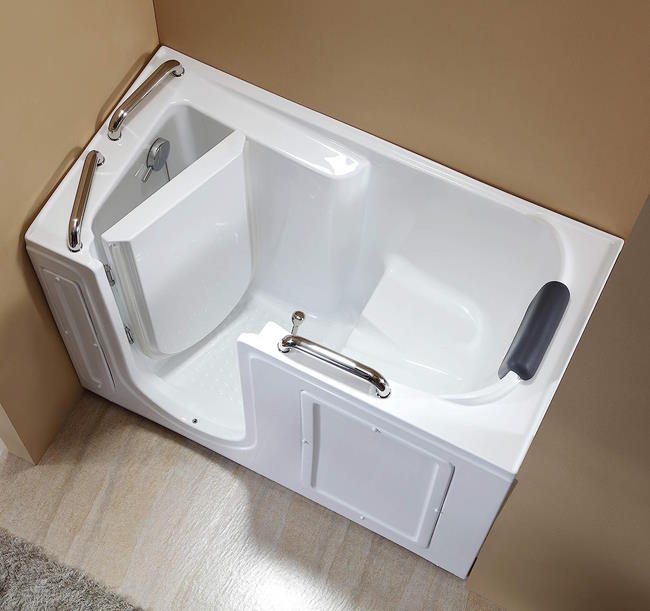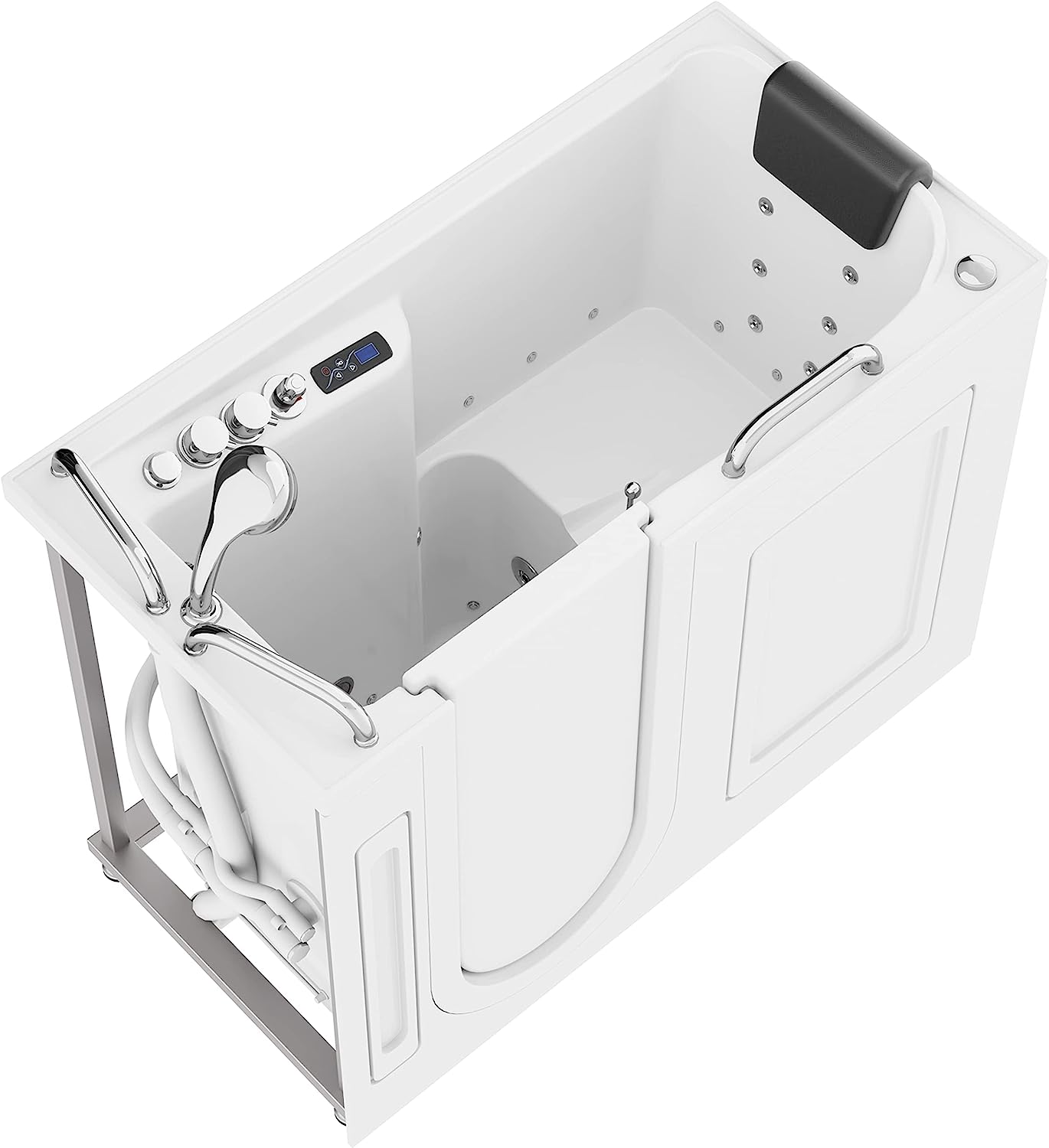Are you considering upgrading your bathtub but unsure of which option is the safest and most cost-effective? Look no further than the Cost-Benefit Analysis Investing in Safety, The Cost-Benefit Analysis of Walk-In Tubs vs. Standard Bathtubs. This comprehensive analysis provides valuable insights into the benefits and drawbacks of both walk-in tubs and standard bathtubs, allowing you to make an informed decision for your bathroom renovation. Discover the potential advantages that walk-in tubs offer in terms of safety and convenience, while also considering the financial implications. Whether you prioritize accessibility, durability, or budget-friendliness, this analysis will help you weigh the pros and cons to determine the best choice for your needs.

Overview of Walk-In Tubs and Standard Bathtubs
Definition and Features
When it comes to choosing a bathtub, you have two main options to consider: walk-in tubs and standard bathtubs.
Walk-in tubs are specially designed to provide easy accessibility for individuals with limited mobility or physical disabilities. They have a door that swings open, allowing users to enter and exit the tub without having to step over a high threshold. Walk-in tubs also often come with handrails, non-slip surfaces, and built-in seating for added safety and convenience.
On the other hand, standard bathtubs are the traditional tubs that many of us are familiar with. They do not have any special accessibility features and typically require users to step over a high side to enter and exit the tub.
Benefits of Walk-In Tubs
Walk-in tubs offer several benefits that make them an attractive option for individuals with mobility challenges. Firstly, they significantly reduce the risk of falls and accidents during bathing. With their low threshold, handrails, and anti-slip surfaces, walk-in tubs provide a secure bathing experience. Additionally, these tubs are designed to improve accessibility, allowing individuals to maintain their independence and privacy. Finally, walk-in tubs provide an enhanced bathing experience with features like hydrotherapy jets, heated seats, and aromatherapy options.
Benefits of Standard Bathtubs
While walk-in tubs have their advantages, standard bathtubs also have their own benefits to consider. Standard bathtubs are more affordable upfront, making them a budget-friendly option for homeowners. They also offer a wide range of styles and sizes, allowing you to choose a bathtub that suits your personal preferences and bathroom décor. Standard bathtubs are versatile and can be used for various purposes, from quick showers to relaxing baths.
Cost Analysis of Walk-In Tubs vs. Standard Bathtubs
Initial Cost
When comparing the initial cost of walk-in tubs and standard bathtubs, it’s important to note that walk-in tubs generally have a higher price tag. The additional features and accessibility options in walk-in tubs contribute to their higher cost. On the other hand, standard bathtubs come in a wide range of prices, depending on the materials and design. It’s important to consider your budget and the specific features you require before making a decision.
Installation Cost
The installation cost of walk-in tubs is another factor to consider. Walk-in tubs often require professional installation due to their unique design and plumbing requirements. This can add to the overall cost of the tub. On the other hand, standard bathtubs are typically easier to install and may not require professional assistance, saving on installation costs.
Maintenance Cost
When it comes to maintenance, both walk-in tubs and standard bathtubs require some level of care. Walk-in tubs may require additional maintenance due to their specialized features, such as cleaning the jets if you have a hydrotherapy option. Standard bathtubs, on the other hand, may require regular cleaning and routine maintenance to prevent the buildup of mold and grime. It’s important to consider the long-term costs associated with the maintenance of each option.
Benefits of Investing in Safety
Reducing the Risk of Falls
One of the significant benefits of both walk-in tubs and standard bathtubs is their ability to contribute to bathroom safety and reduce the risk of falls. For individuals with limited mobility or balance issues, the high threshold of a standard bathtub can be a significant hazard. Walk-in tubs eliminate this risk with their easy-entry design, handrails, and non-slip surfaces. By investing in a safer bathing option, you can provide peace of mind and enhance your overall safety.
Improved Accessibility
Another crucial benefit of investing in safety through walk-in tubs or standard bathtubs is improved accessibility. Traditional bathtubs can be challenging for individuals with mobility issues, making it difficult for them to bathe independently. Walk-in tubs, with their low thresholds and additional safety features, offer a much more accessible option. Standard bathtubs can also be modified with safety grab bars and non-slip mats to improve accessibility to some extent.
Enhanced Bathing Experience
Investing in safety doesn’t mean compromising on the bathing experience. Walk-in tubs, in particular, often come with additional features like hydrotherapy jets and heated seats, providing a spa-like experience. These features can offer therapeutic benefits for individuals with chronic pain or arthritis. Standard bathtubs, while lacking specialized features, still provide a relaxing and rejuvenating bathing experience.
Considering the Cost of Accidents and Injuries
Medical Expenses
Accidents and injuries in the bathroom can lead to hefty medical expenses. Falls and slips in the bathroom can result in fractures, head injuries, and other serious medical conditions. By investing in a walk-in tub or taking necessary safety measures with a standard bathtub, you can significantly reduce the risk of accidents and associated medical costs.
Loss of Independence
For individuals with limited mobility, accidents in the bathroom can result in a loss of independence. Serious injuries may require assistance with daily activities, leading to a decreased quality of life. By investing in safety with a walk-in tub or implementing safety measures in a standard bathtub, you can maintain your independence and continue to enjoy a high level of autonomy.
Decreased Quality of Life
Accidents and injuries can have a lasting impact on one’s quality of life. The physical pain, emotional stress, and potential long-term consequences can significantly affect daily activities and overall well-being. By prioritizing safety and investing in walk-in tubs or safety modifications for standard bathtubs, you can prevent these accidents and ensure a higher quality of life for yourself or your loved ones.

The Role of Insurance Coverage
Coverage for Walk-In Tubs
Insurance coverage for walk-in tubs varies depending on your specific insurance policy and insurance provider. Some insurance companies offer coverage or partial reimbursement for the cost of a walk-in tub if it is deemed medically necessary. It’s essential to review your insurance policy and discuss your specific needs with your insurance provider to understand the coverage options available to you.
Coverage for Standard Bathtubs
Standard bathtubs are generally not covered by insurance as they are not considered medically necessary. However, it’s worth checking with your insurance provider to confirm any potential coverage options. Some home insurance policies may cover damage caused by accidents in the bathroom, but this does not typically extend to the cost of installing or replacing a standard bathtub.
Long-Term Cost-Savings
Potential Reduction in Medical Expenses
Investing in safety with walk-in tubs or safety modifications for standard bathtubs can lead to long-term cost savings. By reducing the risk of accidents and injuries in the bathroom, you can potentially avoid costly medical expenses associated with falls, fractures, and other injuries. The upfront cost of a walk-in tub or safety modifications can be outweighed by the potential long-term savings in medical bills.
Increased Home Value
Another aspect to consider when analyzing the long-term cost benefits is the impact on your home’s value. Walk-in tubs, with their popularity among older adults and individuals with mobility challenges, can be seen as an attractive feature for potential buyers. This can potentially increase the resale value of your home and provide a return on your investment. Standard bathtubs, while not as specialized, still contribute to the overall appeal of a bathroom.
Factors Affecting Cost-Benefit Analysis
Individual Health and Mobility
Your individual health and mobility play a significant role in determining which option is best for you. If you have limited mobility or physical disabilities, a walk-in tub may be the safer and more accessible choice. However, if you have no mobility issues and prioritize personal preference, a standard bathtub may be more suitable.
Financial Considerations
Budget constraints and financial considerations also play a crucial role in the cost-benefit analysis. The initial cost, installation cost, and ongoing maintenance cost should all be carefully weighed against your budget and financial capabilities. While walk-in tubs offer numerous benefits, they may not be financially feasible for everyone.
Future Needs and Aging in Place
When making a decision between walk-in tubs and standard bathtubs, it’s important to consider your future needs and the concept of aging in place. If you plan to stay in your current residence for a long time and anticipate potential mobility challenges in the future, investing in walk-in tubs can be a proactive choice. However, if you plan to move or have no immediate concerns regarding mobility, a standard bathtub may be a more practical option.
Comparing the ROI of Walk-In Tubs and Standard Bathtubs
Assessing the Return on Investment
The return on investment (ROI) of walk-in tubs and standard bathtubs can vary depending on several factors. If safety and accessibility are of utmost importance, the ROI of a walk-in tub can be significant in terms of improved quality of life and reduced risk of accidents. However, if personal preference, budget, and other factors take precedence, the ROI of a standard bathtub could be more favorable.
Calculating Potential Savings
To calculate the potential savings associated with walk-in tubs or standard bathtubs, it’s essential to consider factors such as medical expenses, insurance coverage, home value, and maintenance costs. By weighing these factors against the upfront investment and ongoing costs, you can make a more informed decision that aligns with your specific needs and financial situation.
Choosing the Right Option for You
Personal Preference
Ultimately, the decision between walk-in tubs and standard bathtubs comes down to personal preference. Consider your needs, preferences, and available resources to determine which option is the best fit for you. If safety and accessibility are paramount, walk-in tubs may be the ideal choice. If you prioritize design options and budget-friendliness, standard bathtubs may be a more suitable option.
Consulting with Professionals
To make an informed decision, it’s advisable to consult with professionals such as bathroom designers, contractors, or healthcare providers. These individuals can provide valuable insights and guidance based on their expertise and experience. They can help assess your specific situation and provide recommendations on the most suitable option.
Conclusion
Making an informed decision about whether to invest in walk-in tubs or standard bathtubs requires careful consideration of various factors. Both options offer their own set of benefits and considerations. By thoroughly analyzing the initial cost, installation cost, maintenance cost, and long-term cost savings, you can determine which option offers the best value for your needs. Additionally, factoring in the potential reduction in medical expenses, increased home value, and insurance coverage can provide further insights into the cost-benefit analysis. Ultimately, the choice should prioritize your safety, accessibility, and personal preferences to ensure long-term satisfaction and an investment in your overall well-being.


